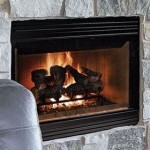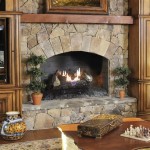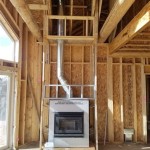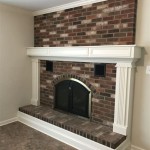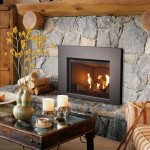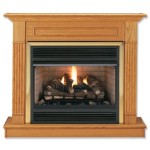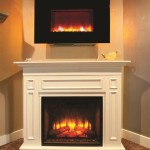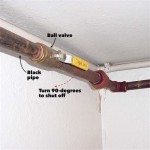Ventless Gas Fireplaces: An Exploration of Their Functionality and Considerations
Ventless gas fireplaces, also known as vent-free gas fireplaces, represent an alternative to traditional wood-burning or vented gas fireplaces. Their defining characteristic is the absence of a chimney or flue for exhausting combustion byproducts. This design feature aims to offer greater installation flexibility and potentially higher energy efficiency. However, the operation of a ventless gas fireplace relies on carefully managed combustion and safety systems to mitigate the risks associated with retaining combustion gases within the living space.
The appeal of ventless gas fireplaces stems from several factors. Firstly, installation is typically simpler and less expensive since it doesn't require the construction or modification of a chimney. This expands the possibilities for placement within a home, allowing for installation in areas where a traditional fireplace would be impractical. Secondly, ventless models theoretically offer higher energy efficiency ratings because the heat generated during combustion is not lost through a vent. This can translate into lower heating costs in certain applications. Despite these advantages, it’s essential to thoroughly understand the technology, safety precautions, and potential drawbacks before considering the installation of a ventless gas fireplace.
Understanding the Combustion Process
The core of a ventless gas fireplace lies in its combustion process. These units are engineered to achieve nearly complete combustion, minimizing the production of harmful byproducts such as carbon monoxide (CO). This complete combustion is essential for safe operation. The burner design, gas-to-air ratio, and catalytic converter components work together to ensure that the gas is burned as cleanly as possible.
Key to the process is the Oxygen Depletion Sensor (ODS) pilot light. The ODS pilot light constantly monitors the oxygen level in the room. If the oxygen level drops below a safe threshold, indicating a buildup of combustion byproducts, the ODS will automatically shut off the gas supply to the fireplace. This safety mechanism is critical for preventing carbon monoxide poisoning.
However, achieving truly complete combustion is challenging in real-world conditions. Factors such as variations in gas pressure, impurities in the natural gas or propane, and changes in air circulation within the room can affect the combustion efficiency. Even with high efficiency, some byproducts, including water vapor and small amounts of carbon dioxide, are released into the room. Therefore, proper ventilation and adherence to manufacturer guidelines are paramount. Regular maintenance, including burner cleaning and inspection of the ODS, is also crucial for maintaining optimal combustion and safety.
Safety Considerations and Regulations
Safety is the most critical aspect of ventless gas fireplaces. While designed with safety features, these appliances require careful consideration and adherence to established safety protocols. Carbon monoxide poisoning is the primary concern associated with incomplete combustion. Carbon monoxide is a colorless, odorless gas that can be lethal in high concentrations. Symptoms of carbon monoxide poisoning include headache, dizziness, nausea, and confusion. Therefore, it is imperative to install and maintain carbon monoxide detectors throughout the home, particularly near sleeping areas.
In addition to carbon monoxide, ventless gas fireplaces release other combustion byproducts into the air, including nitrogen dioxide and water vapor. Nitrogen dioxide can irritate the respiratory system and exacerbate existing respiratory conditions like asthma. High humidity levels from water vapor can promote mold growth and structural damage. Consequently, it's vital to ensure adequate ventilation within the room, even with a ventless fireplace. Opening a window slightly or using a ventilation fan can help to mitigate the buildup of these byproducts.
Building codes and regulations concerning ventless gas fireplaces vary significantly depending on the location. Some jurisdictions may restrict or prohibit the installation of ventless fireplaces altogether, while others may impose strict requirements regarding room size, ventilation, and carbon monoxide detection. It is crucial to consult with local building officials and qualified HVAC professionals before installing a ventless gas fireplace to ensure compliance with all applicable regulations. Moreover, ensuring that the fireplace carries the mark of a recognized testing laboratory (such as UL or CSA) signifies that it has been independently tested and certified to meet safety standards.
Installation and Maintenance
Proper installation and regular maintenance are essential for the safe and efficient operation of ventless gas fireplaces. Installation should always be performed by a qualified and licensed gas technician familiar with the specific requirements of ventless appliances. The technician will ensure that the fireplace is properly connected to the gas supply, that all safety features are functioning correctly, and that the unit is installed in accordance with manufacturer instructions and local building codes.
The location of the fireplace within the room is also a crucial consideration. Ventless fireplaces should be installed in a well-ventilated area, away from flammable materials such as curtains, furniture, and paper. It is important to maintain the minimum clearances specified by the manufacturer to prevent overheating and fire hazards. The room size must also be appropriate for the BTU output of the fireplace. Using a fireplace that is too powerful for the room can lead to excessive heat and a buildup of combustion byproducts. A properly sized fireplace will operate more efficiently and safely.
Regular maintenance is equally important. The burner should be cleaned periodically to remove dust, debris, and soot buildup, which can interfere with efficient combustion. The ODS pilot light should be inspected regularly to ensure that it is functioning correctly. Any signs of damage or malfunction should be addressed promptly by a qualified technician. It is also recommended to schedule an annual inspection by a qualified professional to check the overall condition of the fireplace, test the safety features, and ensure that it is operating safely and efficiently. Neglecting maintenance can compromise the safety and performance of the fireplace, potentially leading to hazardous conditions.
While ventless fireplaces offer certain advantages in terms of installation flexibility and potential energy efficiency, a comprehensive understanding of their operational principles, safety considerations, and maintenance requirements is necessary. The potential risks associated with combustion byproducts must be carefully assessed and mitigated through proper installation, adequate ventilation, and regular maintenance. Consulting with qualified professionals and adhering to local building codes and regulations are essential steps in ensuring the safe and effective use of ventless gas fireplaces.
:max_bytes(150000):strip_icc()/ventless-gas-fireplaces-4160746-hero-f9d4bdcd9bd446eb84406de306f790ba.jpg?strip=all)
How To Pick Out A Ventless Gas Fireplace

Are Vent Free Gas Fireplaces Safe Ventless

Considering A Ventless Gas Fireplace Here S What You Need To Know Bob Vila

Ventless Gas Fireplace Propane

Ventless Gas Fireplace Vent Free Modern

What Is A Vent Free Fireplace
.aspx?strip=all)
Ventless Fireplaces Explained Safety Of Vent Free Fires

A Ventless Gas Fireplace Doesn T Belong In Your Home Greenbuildingadvisor

Superior 32 Inch Vent Free Gas Firebox Vrt3132 North Country Fire

Vented Vs B Vent Direct Free Dixie S
Related Posts

